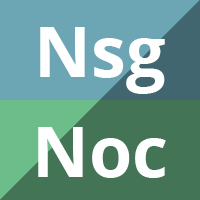
Biopsy versus resection for high-grade glioma
Abstract Background This is an update of the original review published in the Cochrane Database of Systematic Reviews Issue 1, 2000 and updated in 2003, 2007 and 2010. People with a presumed high‐grade glioma (HGG) identified by clinical evaluation and radiological investigation have two initial surgical options: biopsy or resection. In certain situations, such as severe raised […]

Antiangiogenic therapy for high-grade glioma
Abstract Background This is an updated version of the original Cochrane Review published in September 2014. The most common primary brain tumours in adults are gliomas. Gliomas span a spectrum from low to high grade and are graded pathologically on a scale of one to four according to the World Health Organization (WHO) classification. High‐grade […]

Interventions for the treatment of brain radionecrosis after radiotherapy or radiosurgery
Abstract Background Brain radionecrosis (tissue death caused by radiation) can occur following high‐doseradiotherapy to brain tissue and can have a significant impact on a person’s quality of life (QoL) and function. The underlying pathophysiological mechanism remains unclear for this condition, which makes establishing effective treatments challenging. Objectives To assess the effectiveness of interventions used for […]

Whole brain radiotherapy for the treatment of newly diagnosed multiple brain metastases
Abstract Background This is an update to the review published in the Cochrane Library (2012, Issue 4). It is estimated that 20% to 40% of people with cancer will develop brain metastases during the course of their illness. The burden of brain metastases impacts quality and length of survival. Objectives To assess the effectiveness and […]

Magnetic resonance perfusion for differentiating low-grade from high-grade gliomas at first presentation
Abstract Background Gliomas are the most common primary brain tumour. They are graded using the WHO classification system, with Grade II-IV astrocytomas, oligodendrogliomas and oligoastrocytomas. Low-grade gliomas (LGGs) are WHO Grade II infiltrative brain tumours that typically appear solid and non-enhancing on magnetic resonance imaging (MRI) scans. People with LGG often have little or no […]

Intraoperative imaging technology to maximise extent of resection for glioma
Abstract Background Extent of resection is considered to be a prognostic factor in neuro-oncology. Intraoperative imaging technologies are designed to help achieve this goal. It is not clear whether any of these sometimes very expensive tools (or their combination) should be recommended as standard care for people with brain tumours. We set out to determine […]

Whole brain radiation therapy (WBRT) alone versus WBRT and radiosurgery for the treatment of brain metastases
Abstract Background Historically, whole brain radiation therapy (WBRT) has been the main treatment for brain metastases. Stereotactic radiosurgery (SRS) delivers high‐dose focused radiation and is being increasingly utilized to treat brain metastases. The benefit of adding SRS to WBRT is unclear. This is an updated version of the original Cochrane Review published in Issue 9, […]

Procarbazine, lomustine and vincristine for recurrent high-grade glioma
Abstract Background Recurrent high-grade glioma (HGG) carries an extremely poor prognosis. There is no current standard of care or guideline-based recommendations. Nitrosourea-based multidrug chemotherapy or PCV — procarbazine, lomustine (CCNU) and vincristine — is one of the treatment options at recurrence. There has been no meta-analysis which looks at the benefits and harms of PCV […]

Biopsy versus resection for the management of low-grade gliomas
Abstract Background This is an updated version of the original Cochrane review published in 2013, Issue 4. Low‐grade gliomas (LGG) constitute a class of slow‐growing primary brain neoplasms. Patients with clinically and radiographically suspected LGG have two initial surgical options, biopsy or resection. Biopsy can provide a histological diagnosis with minimal risk but does not […]

Intravenous versus inhalational techniques for rapid emergence from anaesthesia in patients undergoing brain tumour surgery
Abstract Background Brain tumour surgery usually is carried out with the patient under general anaesthesia. Over past years, both intravenous and inhalational anaesthetic agents have been used, but the superiority of one agent over the other is a topic of ongoing debate. Early and rapid emergence from anaesthesia is desirable for most neurosurgical patients. With […]

